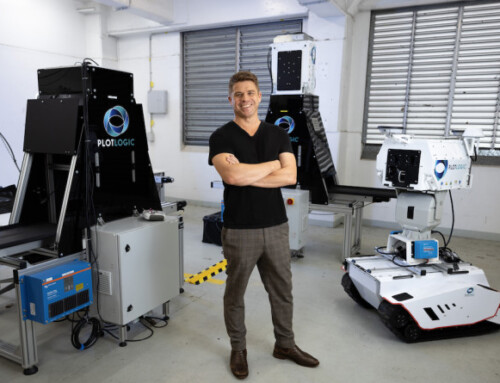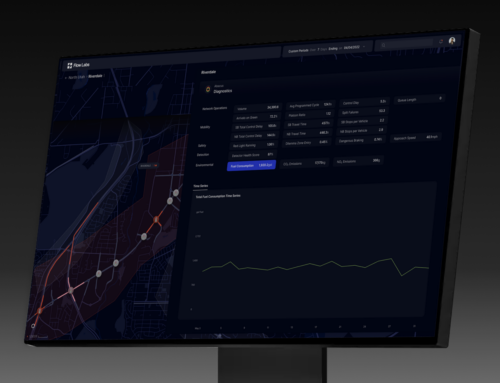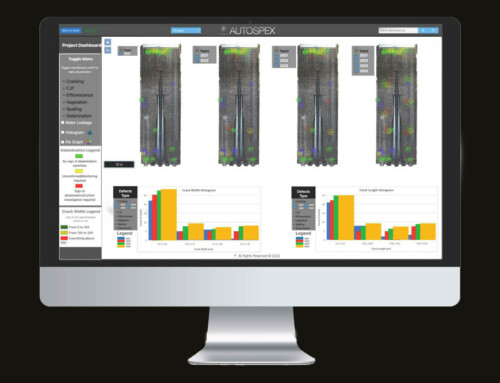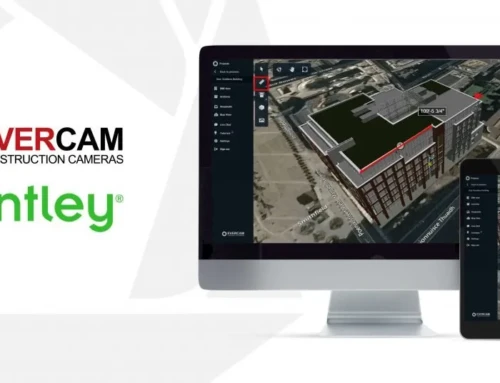This blog on digital twin technology was originally published by Unearth, a SaaS platform streamlining field operations for critical infrastructure providers. Partnered with Bentley’s iTwin platform, Unearth is working to transform the hand-off between engineers, contractors, and owners by streamlining field-to-office communication, documentation, and data integrity throughout the full asset lifecycle.
It’s common knowledge the nation’s roads, bridges, pipelines, waterways, and grid are in bad need of repair – earning a C- on the American Society of Civil Engineer’s report card.
The recent Infrastructure Investment and Jobs Act (IIJA) aims to change this with an incredible $1.2 trillion that will jumpstart construction projects across the country.
However, this funding can only be so successful in industries plagued by systemic delays, frequent rework, and ballooning budgets. To successfully transform U.S. infrastructure, teams need to address a persistent challenge: data.
With this in mind, digital twin technology will prove central to bringing U.S. infrastructure into the 21st century – improving communication, productivity, and data integrity.
A digital twin built to bridge the field and office can transform the entire asset lifecycle from construction site to ongoing O&M. For the nation’s highways and electrical grid to last, the hand-off between owners, engineers, and general contractors can’t be neglected.
From the very beginning, stakeholders along the value chain need to collaborate on a digital twin platform and align on designing, building, and maintaining infrastructure that endures for future generations.
III. Bridging the gap between office and field with digital twins
- Transforming project hand-off by aligning on data
- Beyond construction: streamlining O&M through digital twins
- Conclusion: field adoption is key to digital twin technology
- What is a digital twin?
Let’s begin with the Digital Twin Consortium’s definition:
“A digital twin is a virtual representation of real-world entities and processes, synchronized at a specified frequency and fidelity.”
That first part – “virtual representation” – causes the most confusion. Yes, a digital twin represents assets digitally (often with virtual models), but it’s so much more than mere representation.
Digital Twin vs. BIM
It’s important to differentiate between a digital twin and Building Information Modeling (BIM) here. After all, the American Institute of Architects defined BIM as “a digital representation of the physical and functional characteristics of the project.”
See why this is confusing?
The key difference between BIM and a digital twin is that a digital twin “is living” and presents a “dynamic representation,” according to Bentley Systems’ Kevin Vivien.
While BIM provides a static model of an asset, a digital twin incorporates real-time data from the field – so a team can visualize how a project has developed over time, build an accurate as-built, view its live status, and run analysis of its future.
The first digital twin is often credited to NASA’s Apollo 13 mission, when mission control relied on simulators to understand Apollo 13’s situation, troubleshoot solutions, and bring them safely home.
Despite being unable to physically enter and evaluate the aircraft that was out in space, mission control leveraged real-time information relayed by the astronauts to visualize the problem and model potential outcomes. Here again is the difference between BIM and digital twins: digital twins are tied to the reality on the ground.
An accurate digital twin draws in BIM models, photos, drawings, documents, IoT data, and more – centralizing everything you need to know, at any time.
From design to O&M
Greg Bentley, Bentley Systems CEO, highlights a key feature of digital twins in explaining his company’s objective with the technology:
“Our endeavors till now have made software to produce useful deliverables, but therefore a static and dated purpose. Our objective in Digital Twins is to make the value of those deliverables endure over the longevity of the asset and have evergreen visibility into what has been ‘dark engineering’ data to synchronize its changes over time and to open up this dark data for immersive visualization.
“But even more importantly, the visibility of analytics, including analytics over time for Digital Twin is that fourth dimension, 4D.”
In other words, a digital twin provides unparalleled visibility from design to construction and enduring O&M – not only so nothing is lost between hand-offs but that data actually informs decision-making.
Too often, paper, poorly integrated apps, siloed legacy systems, or spreadsheets prevent stakeholders throughout the value chain from accessing actionable data or creating a rich system of record.
Let’s take construction as an example.
It may be old news that construction’s reliance on analog technologies has contributed to its productivity crisis. However, it’s key to understand that construction’s delays and high costs have ripple effects – ultimately impacting the health and longevity of an asset.
A single source of truth for both office and field, digital twin technology promises to not only overcome many of the data and communication challenges within construction but transform the entire asset lifecycle.
- Case study: construction’s enduring productivity crisis
Construction’s not set to slow down any time soon. The sector employs 7% of the world’s working-age population, accounts for 6% of the global GDP, and is set to hit $17.5 trillion by 2030.
On this scale, any minor inefficiency is critical – and construction’s significant challenges with data and communication cost billions of dollars every year.
Big data, high costs, consistent rework, and inevitable delays
For some of the most significant infrastructure projects, teams produce an average of 130 million emails, 55 million documents, and 12 million workflows.
Yet, construction is one of the least digitized sectors globally – hampered by analog processes in the field and legacy systems in the office.
Among the findings of a 2018 industry report by FMI and PlanGrid:
- Construction workers waste two working days every week searching for project data (revised drawings, material cut sheets, etc.) and resolving avoidable issues (e.g., conflict resolution, rework, etc.)
- These non-optimal tasks will cost a mid-sized construction company over $2 billion every year, totalling $177.5 billion across the sector
- Poor communication and project information cause nearly half of all rework – a $31.3 billion price tag every year
A 2021 survey by FMI indicates construction’s issues with data quantity and quality remain significant:
- Available project data has doubled over just three years
- But 25% of respondents’ project data is unusable
- ⅓ of all poor decisions are due to bad data
- Bad data may have cost $1.84 trillion in 2020 because of this poor decision making
- $88.7 billion in rework could be traced to bad data
In short, as construction projects grow larger and more complex within a rapidly growing sector, good data and communication are more important than ever.
Trillion dollar opportunities, yet declining productivity
Construction’s decline in productivity and challenges with data aren’t new. A World Economic Forum (WEF) report observed in 2016 that while other U.S. industries were seeing a 153% growth in labor productivity over the last 50 years, construction fell by 19%.
The WEF argued digitalization is “central” to construction’s transformation and would produce global savings of $0.7-1.2 trillion in Engineering and Construction and $0.3-0.5 trillion in Operations. In other words, the benefits of digitalization extend along the entire value chain.
The same year, a McKinsey report identified $57 trillion in global infrastructure spending necessary by 2030. This is an enormous opportunity for construction companies which can ditch manual processes and exchange pencil and paper for new technologies built for the job.
Building a competitive construction company
McKinsey highlighted five areas where construction companies can innovate and gain a competitive advantage:
- Higher-definition surveying and geolocation
- Next-generation 5-D building information modeling
- Digital collaboration and mobility
- The Internet of Things and advanced analytics
- Future-proof design and construction
Of the five, four directly concern collecting, visualizing, and processing information. Information’s central role here may come as no surprise considering the stats we explored earlier. To be effective, construction companies need a rich, accurate, real-time system of record.
Here is where digital twins will transform construction.
III. Bridging the gap between office and field with digital twins
Construction’s challenges in the field reflect issues also encountered by design and O&M.
Too often, field crews document work on paper, save data to spreadsheets and thumb drives, then waste time getting updated info to the back office. This is slow, error-prone, costly, and difficult for third parties to work with. As a result, a digital twin’s instant access to data on every physical asset hinges on innovation in the field.
Construction companies need to exchange manual processes and analog technologies for field solutions that are mobile, cloud-based, and data agnostic. These are key requirements for an accurate digital twin.
The status quo: manual data collection & transfer
There’s been progress in construction’s adoption of mobile technology – but significant issues remain: manual data collection and transfer, poor adoption of field apps, and a lack of integrations.
Manual data collection persists
A 2018 survey by TrackVia reported 47% of construction managers use manual methods when capturing key project information. Notably, the majority of managers agree manual systems lead to incomplete information on work quality.
A great first step in digitizing construction is adopting mobile technology.
In a 2018 study, nearly 50% of construction companies reported mobile tech increases the volume of quality data they can collect – and the vast majority agreed on improvements in data access and field-to-office communication.
Despite mobile tech adoption, companies neglect field software
However, simply equipping field workers with mobile technology won’t solve construction’s data challenges.
For instance, PlanGrid and FMI observe that while 75% of those surveyed provide mobile devices to project managers and field supervisors, less than 50% use apps. Instead, information is decentralized across email, text, and phone calls.
Field software is key to centralizing this data, dissolving siloes, and ensuring data integrity, so general contractors can avoid rework, resolve disputes, and create accurate as-builts.
A lack of integrations leads to manual data transfer
Still, even for those with field apps, a lack of integrations prevent teams from leveraging mobile software to its fullest potential.
In fact, over 50% of those surveyed in JB Knowledge’s 2021 study are manually transferring data for apps because of missing integrations. Despite field software adoption, construction companies are falling back on “manual transfer, spreadsheet imports, email, or other time consuming, error-prone processes.”
The same study identifies “a systemic dependency on spreadsheets.” Companies persevere with spreadsheets even when studies have shown 88% contain errors.
While mobile devices and software in the field are critical to construction’s transformation, siloed applications aren’t the answer. Construction needs an integrated network of apps to streamline data transfer.
Connecting digital twins to the field with cloud-based tools
To bridge the gap between office and field, managers should equip crews with integrated mobile software that enables easy data capture, error-free data sharing, and centralized collaboration.
While digital twins have the potential to transform construction, successful implementation depends on field crews becoming first-class technology citizens.
Companies that offer data agnostic SaaS solutions are uniquely prepared to address this need by streamlining workflows and ensuring digital twins are rooted in the truth on the ground.
For instance, if general contractors are going to benefit from real-time data access and create accurate as-builts, they need dynamic, quality data from the field.
Ultimately, digitization is only valuable as long as it’s paired with integration and clean collaboration between boots on the ground, back-office systems, and stakeholders along the value chain.
- Transforming project hand-off by aligning on data
Though integrated mobile software is a key step forward in construction, siloed applications aren’t simply an issue in the field. The same goes for legacy back-office systems (EAM, GIS, etc.) and even digital twins – when stakeholders aren’t aligned on digital twin technology from project inception.
Considering these siloes, it’s not surprising 95% of total data collected in construction and engineering goes unused and 30% of this data is actually lost by project hand-off. In 2004, NIST estimated the annual cost of interoperability for general contractors was $1.8 billion. And the problem persists today.
In contrast, a digital twin born at the beginning of a project can provide comprehensive, real-time visibility for everyone involved.
For example, this collaboration between an asset owner and general contractor ensures a clean project hand-off and makes it easy for a general contractor to create high-quality deliverables.
Creating high-quality, real-time as-builts
When a general contractor partners with an asset owner on digital twin technology, they can dynamically compile documentation and map changes as construction progresses, which guarantees visibility throughout a project and accurate information at hand-off.
This lies in stark contrast to cobbling together as-built drawings at the end of a project or struggling to transfer data between siloed digital twins.
While avoiding rework and disputes are immediate benefits of digital twin technology in construction, an accurate as-built is critical to the entire lifecycle of an asset and leads to significant savings in the long term for an asset owner.
With digital twin technology, an as-built is more comprehensive because data doesn’t get lost amid legacy systems or analog technologies: models, timelines, drawings, forms, maps, photos, video, and more provide a rich context.
Plus, if a digital twin is cloud-based and mobile-friendly, this thorough record can be accessed anywhere, any time, by O&M crews. This saves hours that might be spent traveling to an office and sorting through files.
When a general contractor seamlessly turns over a thorough record, they not only improve their own reputation by documenting clear and effective work but ensure the asset will continue to perform well into the future.
- Beyond construction: streamlining O&M through digital twins
So far, much of our focus has been on construction, but construction isn’t alone in its challenges with data, work, and asset management.
The same goes for asset owners. Take electric utilities, for example.
Case study: an inflection point for electric utilities
The grid is in urgent need of modernization – that’s no secret. In fact, it’s at a breaking point:
- Outages are up nearly 300% from the 1980s
- Billion-dollar weather disasters have averaged more than one per month since 2010
- Roughly 60% of distribution components were installed prior to the 1980s
- The American Society of Civil Engineers graded the energy sector a C-
Utilities operate and maintain assets across hundreds of thousands of miles – a huge undertaking. This will become increasingly challenging as components fail, extreme weather batters the grid, and distributed energy resources multiply.
With electric vehicles alone, utilities not only face the challenge of building an extensive network of charging stations but also maintaining hundreds of thousands of these assets. And then there’s green energy.
Utilities are undergoing significant transformation, and today’s legacy systems won’t keep up. Many owners are buried by spreadsheets and outdated processes and still struggle to answer critical questions: Where are my assets? What are their conditions?
The grid of tomorrow requires robust digital twin technology to manage an influx of assets, streamline inspections, and leverage predictive analytics for effective maintenance and planning.
Superior visibility is critical to the modern grid
The benefits of a digital twin are threefold for utilities and other asset owners:
1) providing an accurate, context-rich record of an asset’s construction
2) representing the asset in real-time
3) modeling the asset’s future to inform decision-making
IoT devices further enhance an asset owner’s ability to monitor the field and plan for the future. And a digital twin ensures you’re not drowned in the data coming in from millions of devices – a challenge for utilities building smart grids.
For a utility, the applications are endless: intelligent inspections, insight into customer behavior, nimble emergency response, resiliency planning, and so much more.
Whether in an emergency command center, at a construction site, on an architect’s desk, or within a utility truck, a shared digital twin promises both immediate and long-term benefits for all stakeholders throughout an asset’s lifespan.
Conclusion: Field adoption is key to digital twin technology
The endless potential of digital twins may be somewhat intimidating – considering the impact extends across the entire value chain.
It’s important to address the elephant in the room: organizational buy-in.
In JB Knowledge’s 2021 survey of the construction industry, “employee hesitance” was the primary limiting factor in trying or adopting new technology. This is especially true for the field – where workers may reject counterintuitive apps and prefer pen and paper.
It’s simple: for digital twins to effectively transform critical infrastructure, they need to make a field worker’s life easier. They need to be intuitive, mobile-friendly, integrated, and cloud-based – so information can be captured quickly and communicated with ease, wherever they are.
This is where our shameless plug comes in.
Our team at Unearth has partnered with Bentley’s powerful iTwin Platform to empower field workers with simple, digital tools – the power of digital twin technology in the palm of their hands.
Check out Unearth’s collaboration with Bentley and learn how Bentley is leading the way by building an open-source digital twin and encouraging an “ecosystem of innovation.”
Or, you can try out Unearth’s intuitive data capture and illuminating map visualizations for yourself with a free trial.





